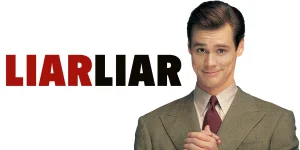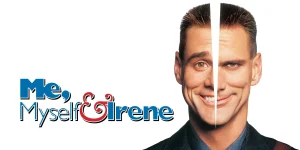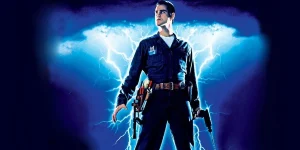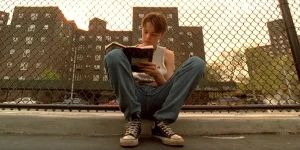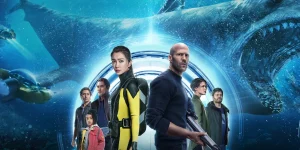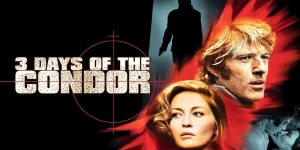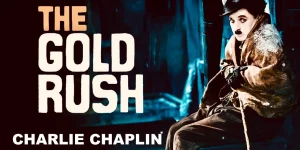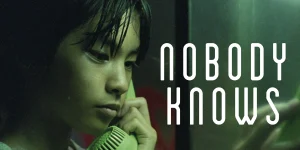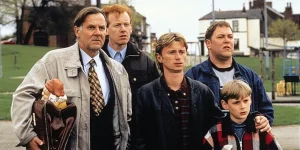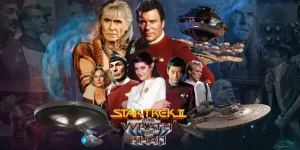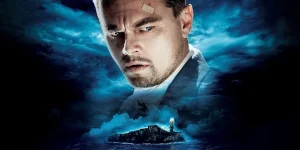Man on the Moon (1999), directed by Miloš Forman and starring Jim Carrey, is a biographical drama about the life, career, and eccentric personality of comedian Andy Kaufman. This film is not your traditional biopic—it plays with reality, blurs truth and performance, and invites you to question what’s real and what’s just a very elaborate joke. Let’s break it down piece by piece.
Table of Contents
ToggleDetailed Summary
Early Life and Breakthrough
The film opens by establishing Andy Kaufman as a child with a bizarre sense of humor. From the beginning, Andy isn’t interested in standard jokes—he stages performances, creates characters, and toys with the idea of entertainment. This foundation sets the stage for the man who would become one of the most unpredictable figures in comedy.
Jim Carrey fully immerses himself in the role, portraying Kaufman with uncanny precision. The film captures his early career performing in comedy clubs, where he introduces his foreign character Latka Gravas, which would become famous through the TV sitcom Taxi.
Latka vs. Andy
Andy quickly becomes disillusioned with mainstream success. He despises Taxi even though it’s his big break, and he sees his character Latka as limiting. This internal tension—between what audiences want and what Andy wants to give them—is a major theme throughout the film. He increasingly leans into bizarre performance art, such as reading The Great Gatsby aloud on stage or engaging in wrestling matches with women.
His alter ego, the abrasive lounge singer Tony Clifton, is another outlet for Andy’s chaotic sense of comedy. Kaufman goes so far as to hire his friend Bob Zmuda to appear as Tony Clifton, muddying the waters of identity even further.
Wrestling and Public Backlash
One of the more surreal chapters in the film is Andy’s wrestling career. Declaring himself the “Inter-Gender Wrestling Champion of the World,” he fights women on stage and insults them mercilessly, much to the audience’s confusion and outrage. This period culminates in a notorious feud with professional wrestler Jerry Lawler, which includes an appearance on Late Night with David Letterman where Lawler seemingly slaps Andy out of his chair. It’s later revealed to be staged—but only to those paying close attention.
Illness and Transformation
As the film moves toward its emotional climax, Andy is diagnosed with a rare form of lung cancer—despite being a lifelong non-smoker. Friends and fans alike are unsure whether this is just another one of his elaborate stunts. Andy, in his typical fashion, even stages a fake death at one point in his career, making it difficult to separate performance from reality.
He tries alternative treatments, even traveling to the Philippines for a controversial psychic surgery, but it ultimately fails. During his final days, Andy performs a heartfelt show at Carnegie Hall, which ends with him inviting the entire audience out for milk and cookies.
Movie Ending
In the final scenes of the film, Andy’s health visibly deteriorates. He dies in 1984 at the age of 35. However, in a final twist that aligns perfectly with Andy’s life philosophy, the film shows Tony Clifton performing at a club after Andy’s funeral. This moment leaves viewers wondering—did he fake his death? Is this Bob Zmuda as Tony Clifton? Or is it Andy one last time? The ambiguity mirrors Andy’s entire career, where the line between truth and act was constantly blurred.
This ending isn’t just a clever narrative device; it’s a profound commentary on the power of illusion, performance, and the strange legacy of a man who lived to mess with people’s perceptions.
Are There Post-Credits Scenes?
No, there are no post-credits scenes in Man on the Moon. However, the entire film is so filled with meta-references and surreal moments that it leaves you feeling like the joke never quite ends—even after the credits roll.
Type of Movie
- Genre: Biographical Drama, Comedy-Drama
- Tone: Offbeat, emotional, introspective, surreal
Cast
- Jim Carrey as Andy Kaufman
- Danny DeVito as George Shapiro (Kaufman’s manager)
- Paul Giamatti as Bob Zmuda
- Courtney Love as Lynne Margulies (Kaufman’s girlfriend)
- Gerry Becker as Stanley Kaufman (Andy’s father)
- Leslie Lyles as Janice Kaufman (Andy’s mother)
- Includes cameos from the real Bob Zmuda, David Letterman, and Jerry Lawler as themselves.
Film Music and Composer
The score was composed by R.E.M., the alternative rock band that also contributed the title track, “Man on the Moon”—originally written as a tribute to Kaufman in 1992. Their music gives the film a poetic and melancholic vibe that aligns beautifully with its themes of identity, reality, and legacy.
Filming Locations
- Los Angeles, California – Used for many studio scenes and recreations of Kaufman’s TV appearances.
- New York City, New York – Several iconic sequences, such as Kaufman’s Carnegie Hall performance, were filmed or recreated here.
- Manhattan Beach Studios – Interior soundstage scenes.
These locations help reflect Kaufman’s transition from comedy clubs to national fame and, ultimately, into performance art legend.
Awards and Nominations
- Jim Carrey won the Golden Globe for Best Actor in a Musical or Comedy.
- The film was nominated for the Golden Bear at the Berlin International Film Festival.
- Despite critical acclaim for Carrey’s performance, the film was not nominated for an Academy Award, which caused significant controversy.
Behind the Scenes Insights
- Jim Carrey stayed in character as Kaufman and Clifton throughout the entire shoot, blurring fiction and reality off-screen as well.
- Carrey’s intense method acting caused tension and awe among the crew, so much so that a Netflix documentary titled Jim & Andy: The Great Beyond (2017) was later released about the making of the film.
- Danny DeVito, who worked with the real Kaufman on Taxi, was frequently overwhelmed by Carrey’s eerie resemblance and behavior.
- The scenes involving real wrestling matches with Jerry Lawler were shot with choreographed precision—but Lawler still ended up injuring Carrey accidentally.
- Forman encouraged improvisation and spontaneity to match Kaufman’s unpredictable nature.
Inspirations and References
- The film is based on the real life of Andy Kaufman.
- It draws from Kaufman’s public stunts, performances, and TV appearances, incorporating many word-for-word recreations of actual footage.
- The title refers to R.E.M.’s song “Man on the Moon,” which contains lyrics about Kaufman’s career and mythos.
Alternate Endings and Deleted Scenes
- A deleted scene included a longer version of Andy’s fake-death prank, which was cut to maintain emotional impact.
- Some of Tony Clifton’s nightclub scenes were also trimmed for pacing.
- An alternate ending was considered where the final Tony Clifton appearance would clearly show Bob Zmuda, but Forman chose ambiguity instead to reflect Andy’s legacy.
Book Adaptations and Differences
- The movie draws from the biography “Andy Kaufman Revealed!“ by Bob Zmuda.
- Unlike the book, which dives deep into behind-the-scenes manipulations and inside jokes, the film takes a more poetic approach and avoids some of Kaufman’s darker personality traits.
Memorable Scenes and Quotes
Key Scenes
- Andy reading The Great Gatsby to a silent, confused comedy club audience.
- Tony Clifton getting kicked off the set of Taxi.
- The infamous Letterman slap with Jerry Lawler.
- The emotional final performance at Carnegie Hall.
- The ending scene with Tony Clifton performing after Andy’s funeral.
Iconic Quotes
- “I’m just trying to give people a good show. That’s all.”
- “There is no real me. I’m just a collection of characters I play.”
- “You don’t know the difference between reality and fantasy.”
Easter Eggs and Hidden Details
- Kaufman’s real-life family members appear in the funeral scene.
- The real Bob Zmuda appears as a reporter during the press conference.
- The movie recreates entire episodes of Taxi with painstaking detail.
- R.E.M.’s song lyrics subtly mirror scenes in the film.
- The opening scene where Andy addresses the audience about the movie possibly being over already is a nod to Kaufman’s love for anti-comedy.
Trivia
- The real Andy Kaufman was once rumored to have faked his death—a myth the film playfully acknowledges.
- Jim Carrey’s portrayal was so committed that he would not respond to his real name for months.
- Miloš Forman previously directed Amadeus, another film about a brilliant, misunderstood artist.
- The film’s original cut was over 2.5 hours long, and was heavily edited for release.
Why Watch?
Watch Man on the Moon if you’re fascinated by the blurry line between comedy and performance art. It’s not just a tribute to Kaufman—it’s an exploration of identity, truth, illusion, and the absurd lengths some artists go to challenge their audience. Jim Carrey’s transformation alone is worth the ticket.
Director’s Other Movies
- Amadeus (1984)
- One Flew Over the Cuckoo’s Nest (1975)
- The People vs. Larry Flynt (1996)
- Hair (1979)
- Goya’s Ghosts (2006)
Recommended Films for Fans
- The People vs. Larry Flynt (1996)
- Jim & Andy: The Great Beyond (2017)
- I’m Not There (2007)
- American Splendor (2003)
- Being There (1979)
- Lenny (1974)



